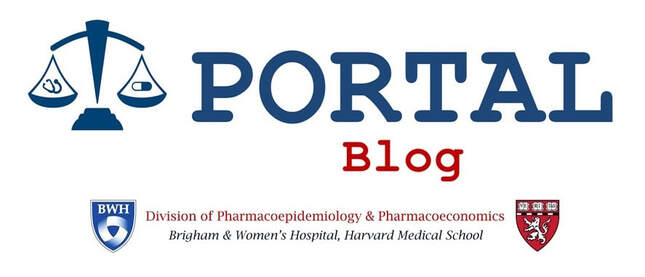Challenging Patents To Promote Timely Generic Drug Entry: The Second Look Act And Other Options8/31/2020
Liam Bendicksen, Jonathan J. Darrow, and Aaron S. Kesselheim This article was originally published on the Health Affairs Blog. Tackling prescription drug costs remains a top priority for voters. Drug spending in the US is driven both by increasing overall prescription volumes and by high prices for brand-name drugs, which are set freely by manufacturers during patent-protected exclusivity periods that last about 13.5 years after drug approval, on average. One important means of addressing the price component of rising expenditures is to facilitate the market entry of generic drugs after exclusivity periods for brand-name drugs last a reasonable amount of time, since the availability of substitutable generics often leads to rapid and substantial reductions in payer drug spending and patient cost sharing. The latest proposal to encourage timely generic entry is a bill in Congress intended to help efficiently screen out improperly issued drug patents. The Problem: Delays In Generic Entry Caused By Improperly Issued Brand-Name Drug Patents Improperly issued drug patents can and do delay the entry of generic drugs. Indeed, a key strategy of brand-name pharmaceutical manufacturers is to obtain patents not just for active ingredients, but also for peripheral features such as a drug’s coating, formulation, or delivery mechanism. In a previous study, we showed that two highly profitable active ingredients were covered by scores of patents. In some cases, these patents may be obtained after FDA approval of the original drug product (though usually based on patent applications filed prior to drug approval) and extend many years in the future at the time the patent on the active ingredient expires and generics are ready to enter the market. As a result, manufacturers of generics frequently must challenge brand-name drug patents in court to sell their products in the US. To address such improperly issued patents, the 1984 Hatch-Waxman Act created a framework that encouraged manufacturers of generic drugs to challenge brand-name patents in court. In the 1990s and 2000s, generic manufacturers prevailed in challenges of method-of-use and formulation patents between 33 percent and 71 percent of the time. But even an ultimately successful court challenge can entail a protracted legal battle that can delay timely entry of a generic, or even deter entry entirely. Moreover, the Hatch-Waxman Act provides that when patents are listed in the FDA’s “Approved Drug Products with Therapeutic Equivalence Evaluations” (commonly known as the “Orange Book”), a lawsuit initiated within 45 days by a brand-name manufacturer triggers a 30-month stay of FDA approval of the generic product, delaying generic market entry by two-and-a-half years or until the litigation resolves, whichever occurs sooner. The Second Look Act The Second Look at Drug Patents Act of 2020 (The Act), cosponsored by Sens. Patty Murray (D-WA) and John Cornyn (R-TX), would increase awareness of a quicker, more efficient way to challenge brand-name patents, without costly litigation and before they are listed in the Orange Book: inter partes review, an administrative process that Congress created in 2011 as part of the Leahy-Smith America Invents Act that allows the United States Patent and Trademark Office (USPTO) to reevaluate its initial decision to grant a patent. The Second Look Act would amend the Food, Drug, and Cosmetic Act to require sponsors of new drugs to notify the USPTO after submitting patent information to the US Food and Drug Administration (FDA). The USPTO would be required to provide notice of these patents on a new website it would create and maintain and in the USPTO’s Official Gazette, a weekly publication. These notices would help alert interested parties that they could file a petition for inter partes review. Inter partes review can reduce the need to litigate the validity of drug patents in federal court. Compared to litigation, inter partes review has several advantages. Most importantly, it is generally cheaper, quicker, and more efficient than court-adjudicated lawsuits. The Patent Trial and Appeal Board (PTAB), which adjudicates inter partes reviews, is an expert body with more than 200 Administrative Patent Judges that collectively have greater expertise across a wide range of scientific and patent law issues than do most federal district courts. The PTAB uses the evidentiary standard of a “preponderance of the evidence” to determine if a patent is invalid, while courts apply the higher threshold of “clear and convincing evidence” to invalidate a patent, making it easier for a patent challenger to prevail before the PTAB. Any person may initiate an inter partes review at any time, potentially long before a generic drug application is filed. Prior questions about the constitutionality of inter partes review have been resolved, and the process now appears to be on solid legal ground. Of course, inter partes review does not guarantee invalidation of drug patents since, as with court litigation, patents will remain intact if they were validly granted. For example, only 3 percent of active ingredient patents challenged in Hatch-Waxman Act litigation were found invalid or not infringed. But early evidence suggests that inter partes reviews conducted by the PTAB are an effective way to address improperly granted patents, including drug patents. From September 2012 to November 2018, final written decisions issued by the PTAB invalidated 46 percent of claims in Orange Book-listed patents (patents often have multiple “claims” that define the scope of exclusionary rights). The Need For Additional Action While increasing awareness of inter partes review is important, it is crucial to recognize that the Second Look bill does not alter the existing inter partes review process for challenging patents in any way. Furthermore, the patent information provided by the Second Look Act is already in the public domain. Since 1984, federal law has required that drug patent information be provided to the FDA at the time of new drug application submission, and then listed in the Orange Book, which is freely available online. The USPTO already publishes information about new patents in its Official Gazette. Thus, while the Second Look Act might be helpful, more could be done to help generic drugs come to market. For example, patent law currently provides that “a patent shall be presumed valid,” placing the burden on the litigant challenging the patent to prove invalidity by clear and convincing evidence. Rep. Hakeem Jeffries (D-NY) and Rep. Doug Collins (R-GA) have proposed shifting this burden of proof to the brand-name manufacturer. Other policy alternatives include restricting the types of patents that may be listed in the Orange Book. For example, researchers have proposed that policymakers restrict Orange Book listings to a single patent per drug, or to only those patents covering the active ingredient of a drug. Lawmakers could also prohibit late-listed patents, i.e., patents not submitted to the FDA until after the filing a new drug application, unless a patent covers changes that confer additional clinical benefits. However, the listing of patents in the Orange Book was intended to increase transparency and facilitate the filing of patent challenges by generic drug companies, so listing only some patents would frustrate this goal. A better option would be to continue to require that most patents be listed in the Orange Book, but reduce the 30-month stay to a shorter period, such as 18 months. Lawmakers could also limit the stay to a narrower set of patents or eliminate the stay entirely, though this could lead to delayed litigation (and thus delayed generic entry) by removing the incentive for brand-name manufacturers to bring patent challenges within 45 days. Publishing drug patent information in the Official Gazette and a new USPTO website may elevate the visibility of both new drug patents and the inter partes review process, and could encourage generic manufacturers and other interested parties to challenge those patents. But its potential impact, even if enacted, is likely to be limited. Historically, approximately 91 percent of Orange Book-listed patents challenged in inter partes review have also been challenged in court, and 95 percent of Orange Book inter partes review petitions were filed after court litigation began. These figures suggest generic manufacturers are seeking the more challenger-favorable evidentiary standards and other benefits of inter partes review to help clear a path to market entry, but may be less willing to forego the 180-day exclusivity available to first generic patent challengers under the Hatch-Waxman Act (which inter partes review does not provide). While the Second Look Act is a step in the right direction, other ways that lawmakers can address the issue of invalid drug patents delaying generic entry will likely go further towards ensuring a proper balance between drug innovation and access. Comments are closed.
|
AuthorPORTAL Blog posts are authored by PORTAL faculty, trainees, and collaborators. Archives
January 2022
Categories |
|
Program On Regulation, Therapeutics And Law (PORTAL)
Division of Pharmacoepidemiology and Pharmacoeconomics 1620 Tremont Street, Suite 3030 Boston, MA 02120 |





 RSS Feed
RSS Feed
